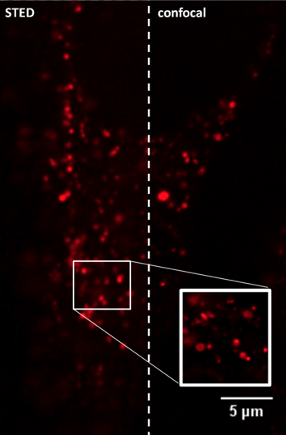There has been a paradigm-shift in light-microscopy over the past twenty years. Many of the rules governing what microscopes can resolve have been overturned. It is now possible to observe the structure of living cells down to single-biomolecule level, offering the prospect to study cell-biochemistry in spectacular detail, and new hope for medicine. However, super-resolution microscopy requires sensors to illuminate the cell interior and conventional probes cannot fulfil the demands of these methods.
Professor Tia Keyes from Dublin City University’s School of Chemical Sciences is leading a research project to develop new probes targeting DNA within the nucleus and mitochondria of living cells and tumours, mapping their dynamic response to therapy in a level of detail that has not been possible before. The project entitled ‘Shedding light on advanced microscopy; Supramolecular probes for superresolution microscopy and phototheranostics’ has been funded by Science Foundation Ireland.











